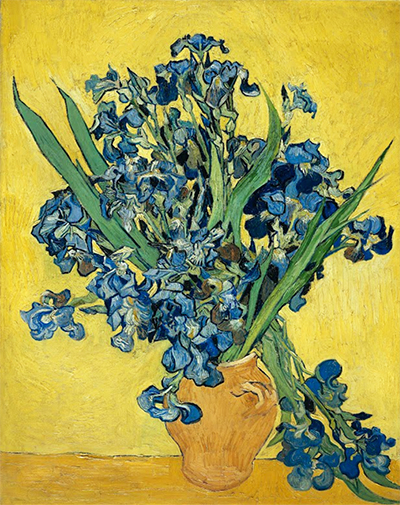In 1890, Vincent van Gogh created this beautiful experiment in colour. This was the year he died. He painted this while staying in the psychiatric hospital in Saint-Rémy.
Deep purple irises against a lemon, yellow background, full of life and sunshine. According to his letters, they were a shade of violet-blue. We see them as blue today, because the red pigment he added to the paint began to fade and the irises are now seen as blue, although this was not the original intention.
Vincent van Gogh's talent was there till the end of his existence in this world and he constantly used it to capture images of beauty. Still life paintings would have been a healing therapy for him, to slow down and quieten the chaos of his tortured mind. He, being the master of colour that he was gave the image his 100% commitment, leaving a legacy for the world to love and enjoy and treasure, forever.
It's a masterly piece, showing everything for which van Gogh was justifiably famous. The detail of the flowers, the juxtaposition of deep, contrasting colours, the lively imagery. Still life it is, but it is life. Standing still, but living, breathing and powerful.
It's particularly fascinating that this breathtaking piece of still life was created near the end of the artist's life. It certainly doesn't seem so. It is full of living colour and pulsing with life. One can only imagine how vibrant those colours would have been when the painting was first created in its pristine glory. There was nothing lacking in the artist's life force at that time.
This is an oil on canvas painting. Oil paintings were his forte, combined with a riot of colour and expression of lifelike imagery. He wished to accentuate the contrast of the colours, rather than making them disappear into each other. He delighted in making putting colours into contrast and studying their effect. For some reason, irises fascinated him.
His letters in those days expressed his delight in his craft and in nature. He told his mother that working outdoors and seeing the flowers was necessary for health. He would have found the confinement in the hospital quite disempowering, although he made use of the time to paint some glorious still life paintings. Had he survived that difficult time and managed to work outdoors and paint those flowers, it isn't difficult to imagine the masterpieces he would have created.




